This page started out as an analysis of my 2.4GHz cantenna. I made a cantenna for Wireless-LAN as part of my wireless cracking experiment and it worked well. It was a much better improvement to my Netgear’s dipole stub antenna. However, it wasn’t as good as I hoped it would be. I had read reports online of these antennas achieving very large distances, and showing 10dB gain over other antenna types. At most, my cantenna seemed slightly better than other antennas. I decided, with the addition of some expensive equipment, I could see what was going on. One day when I didn’t have much to do at university I took the antennas in and decided to give the antennas a test.
These tests were fairly crude, just looking at the frequency response and VSWR of the antennas throughout the range of frequencies I was interested in. Around 2.45 GHz – where WiFi lives. The 3 antennas tested, the Cantenna, the Netgear dipole, and a stacked colinear antenna I picked up at a radio rally.
The Cantenna
The antenna I built was based on a design from the internet. There are many designs about, and I forget which mine is based on.
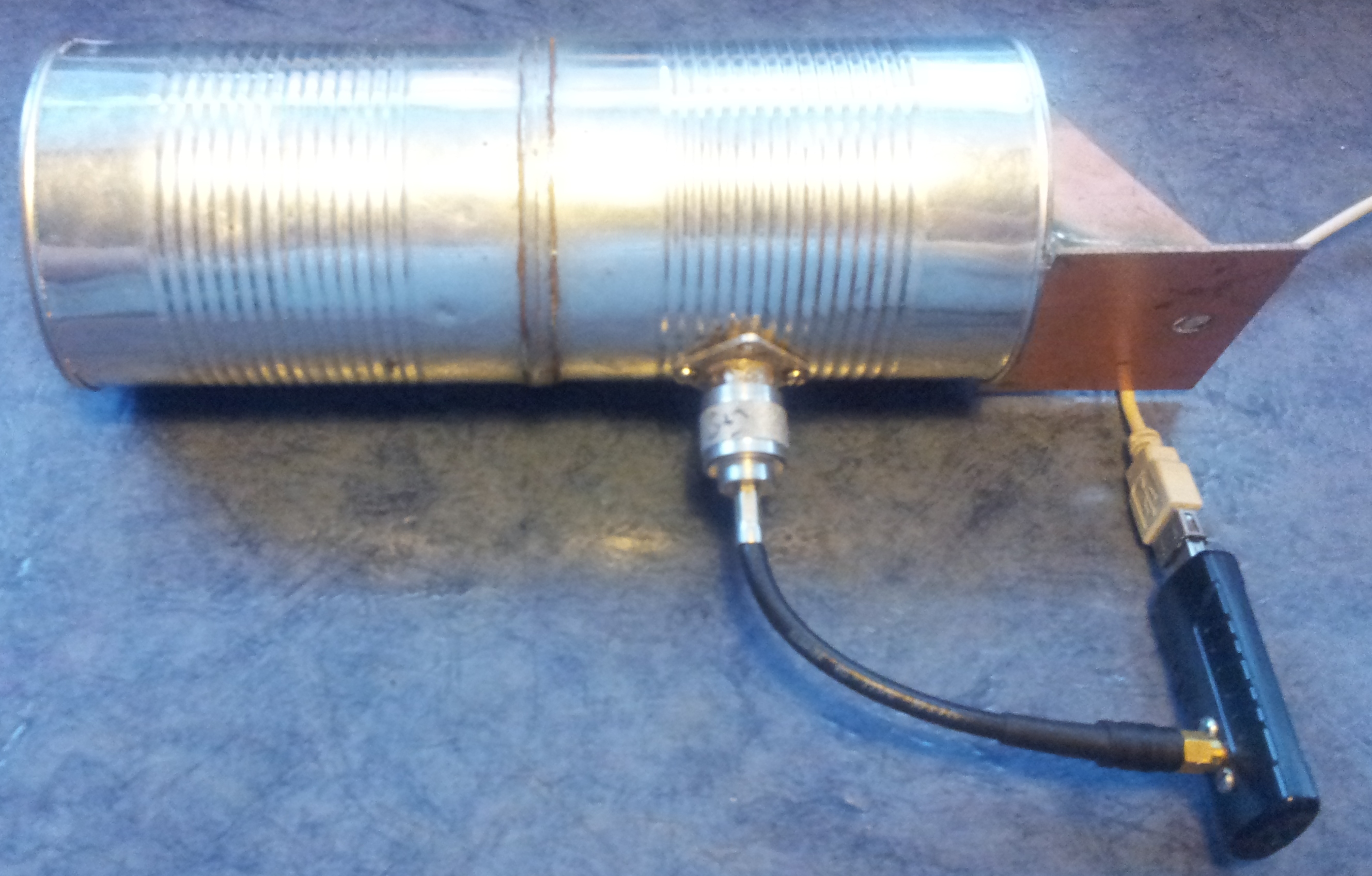 |
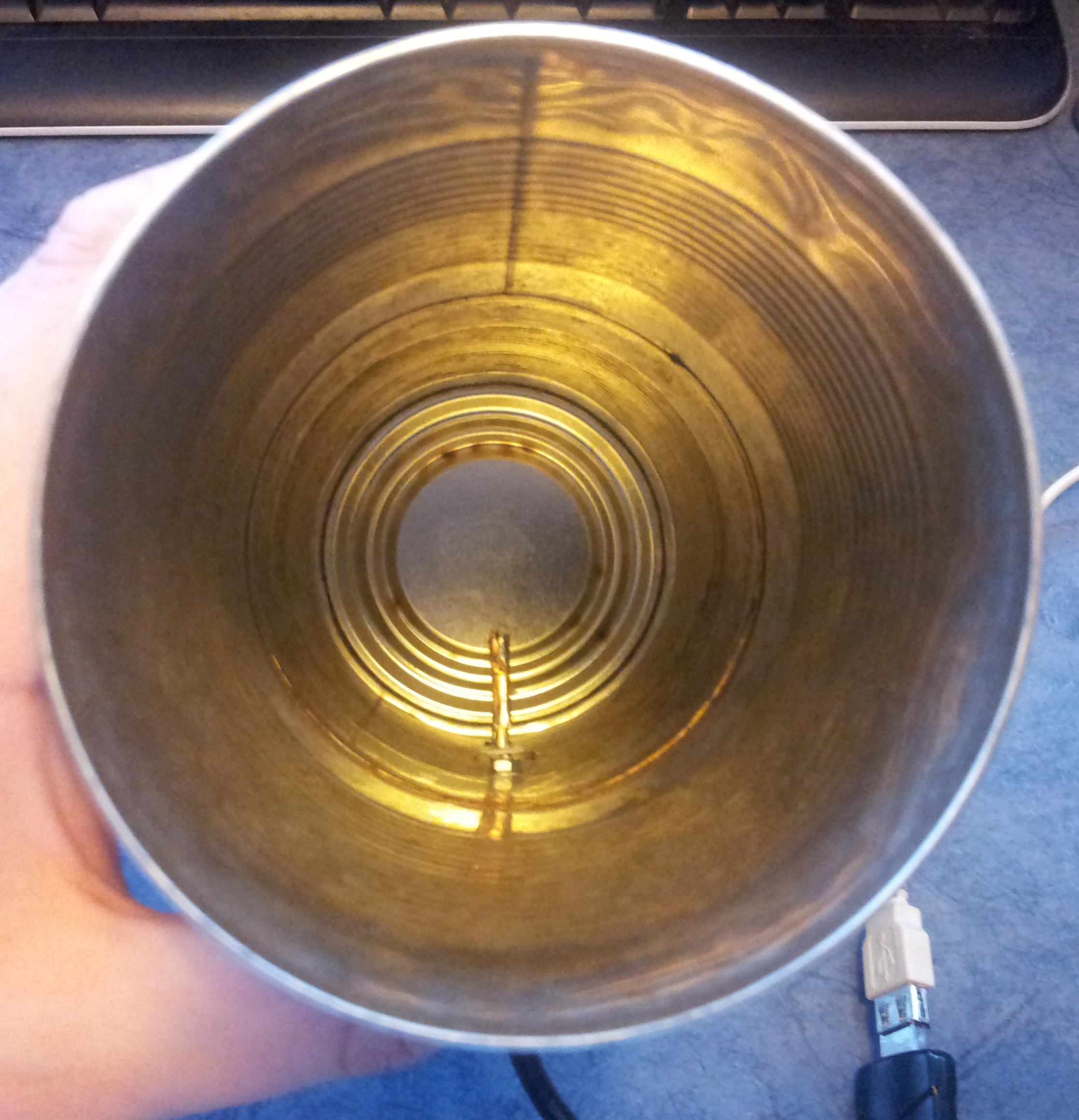 |
The main purpose of this exercise was to see why the cantenna wasn’t as good as I had expected it to be, and to see if I could make it better. I set off to measure the VSWR of the antenna and it’s frequency response. These are presented below:
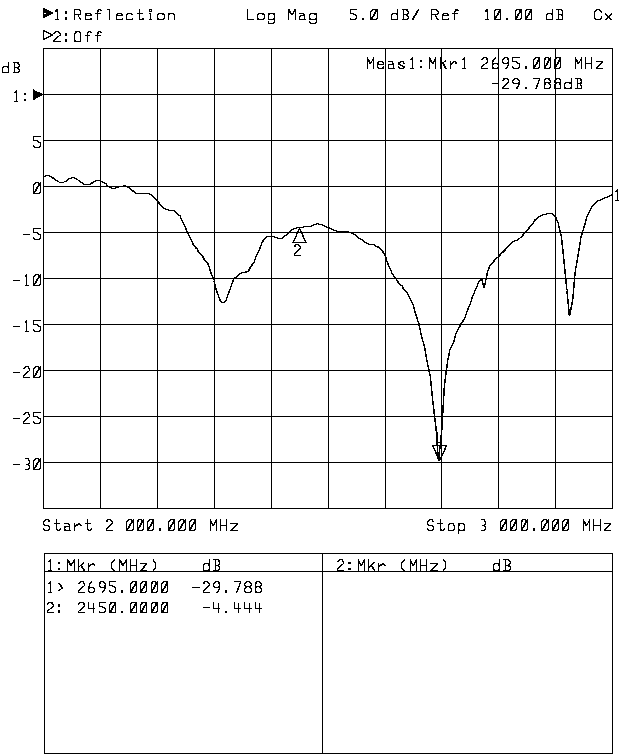 |
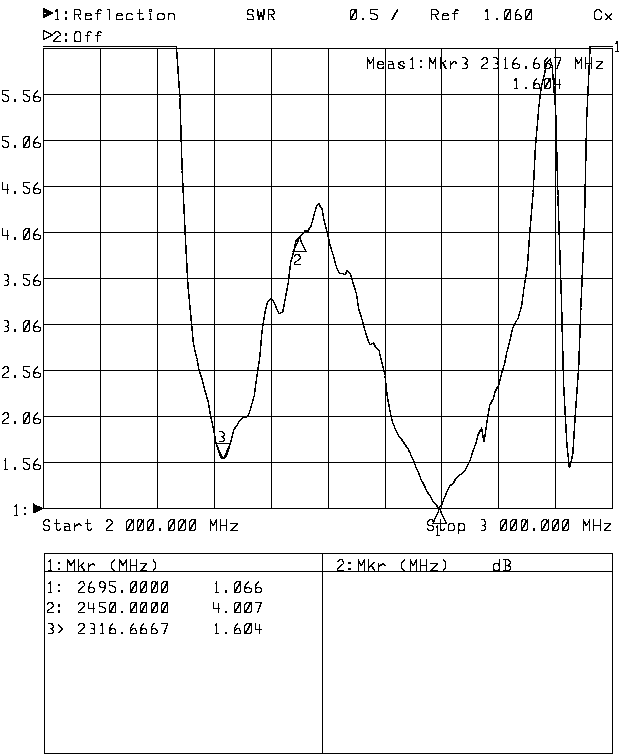 |
I then decided to adjust the element length of inside the cantenna to give the best frequency response and VSWR on the 2.45 GHz band, where WiFi is. This means that the antenna is working optimally on the chosen frequencies. It was not possible to get a perfect (1.0:1) VSWR due to the placing of the element – I believe it is too close to the back of the antenna, and would benefit from being moved forward slightly. You will however notice that the frequency dip is much closer to 2.45 GHz and the VSWR much lower too. The two captures below are both of VSWR.
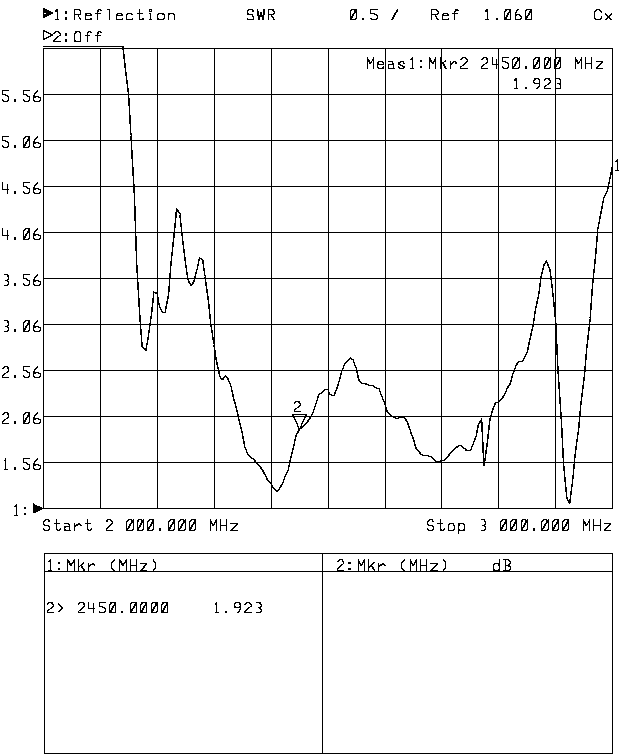 |
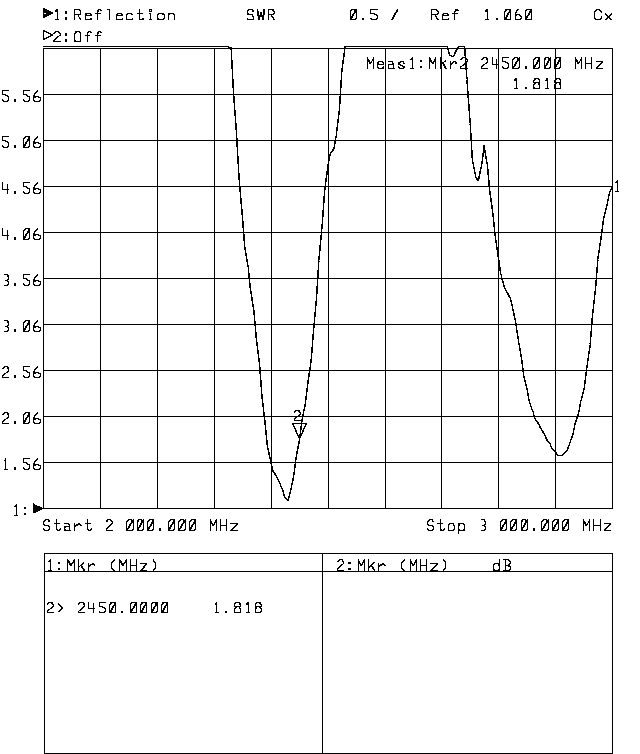 |
The Netgear Dipole
The Netgear Dipole was measured as a benchmark.
It works well, and I wanted to see how good it measured up. In practise, it measures very well. The antenna is simple, just a sleeve dipole – cheap and cheerful.
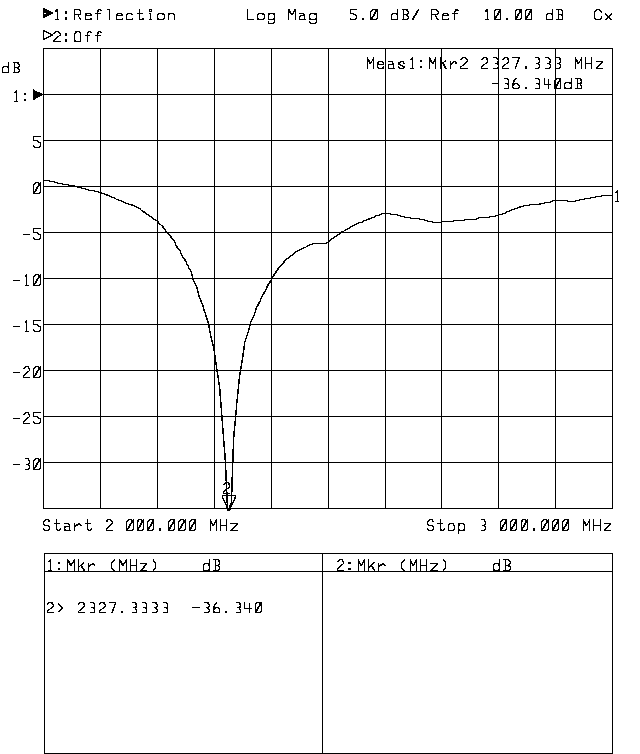 |
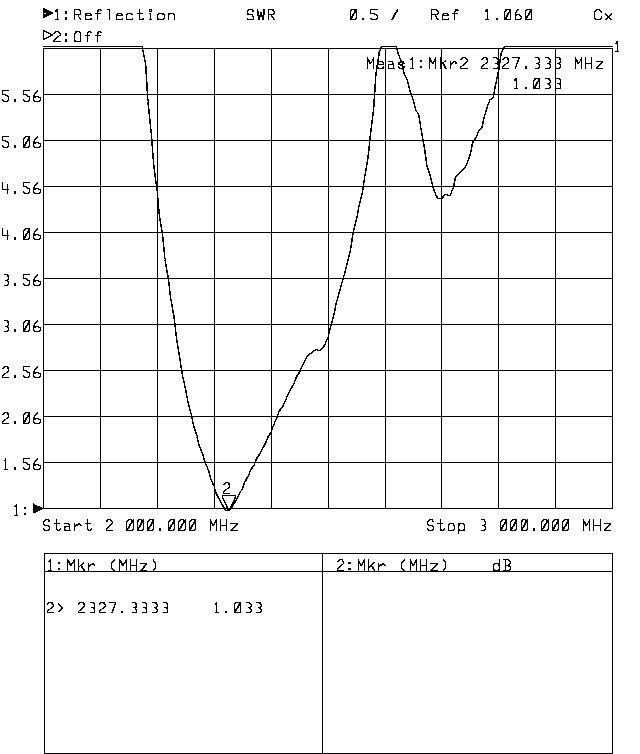 |
The Colinear
I bought the colinear to optimise coverage on my wireless network at home.
 |
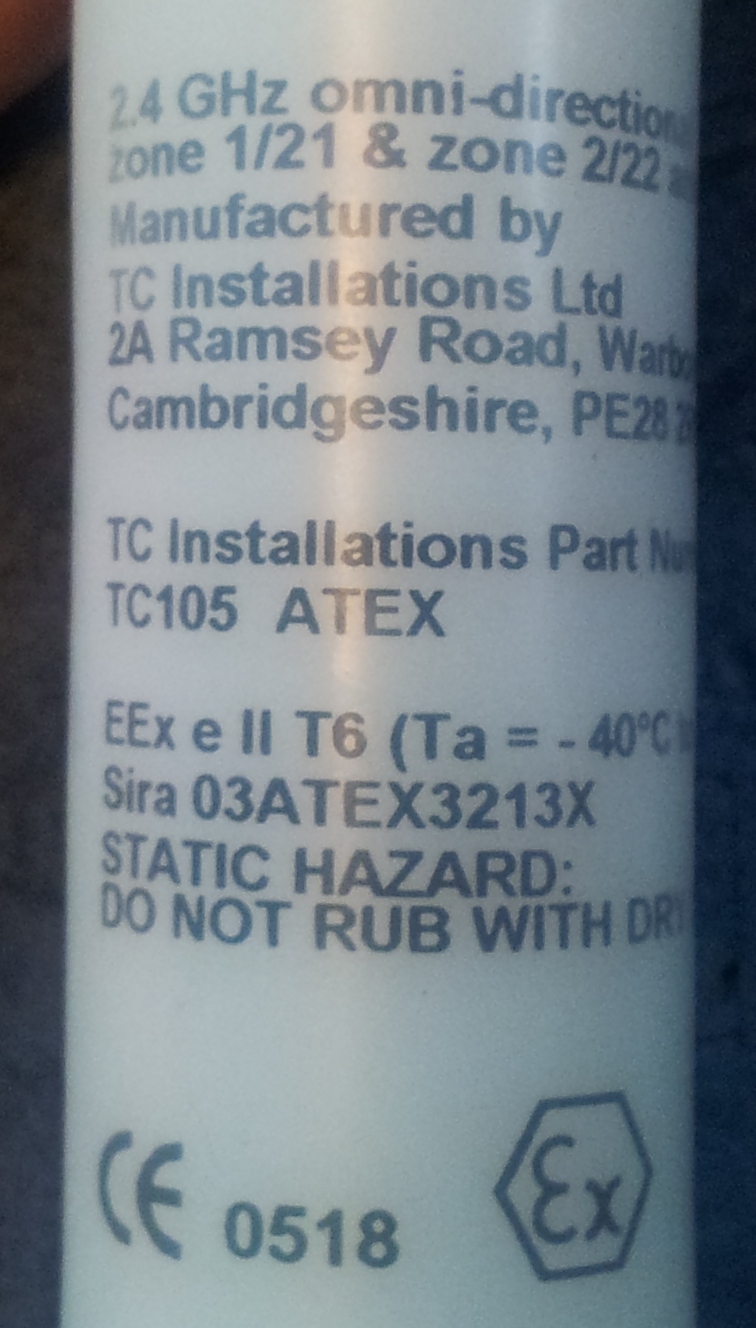 |
It was cheap at a radio rally and I was curious as to how well it would work. I never got around to using it with WiFi, but I kept it with the cantenna and so it made sense to test it too.
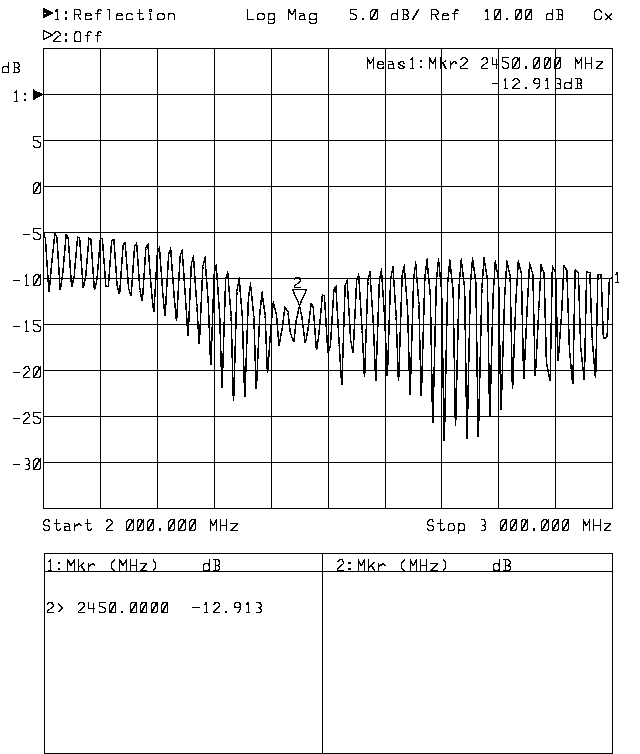 |
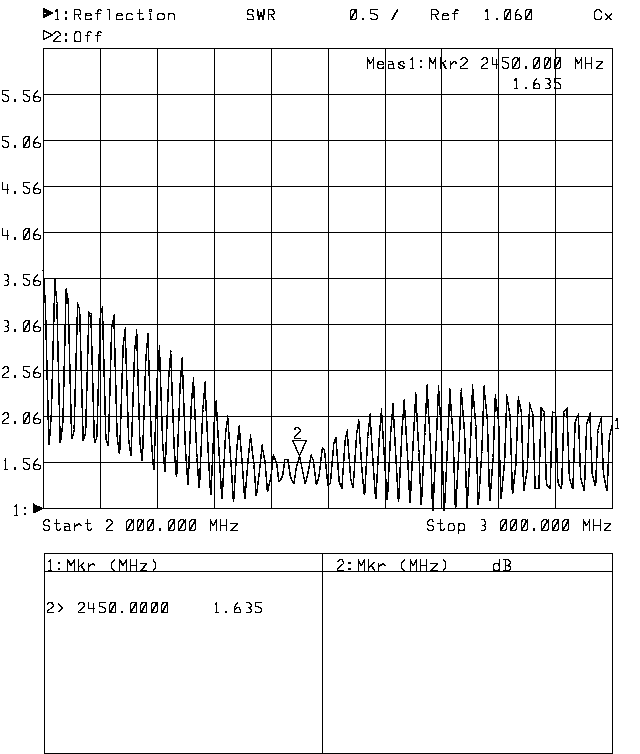 |

